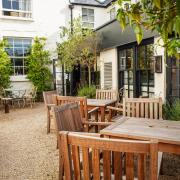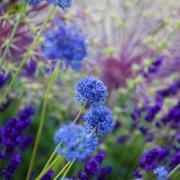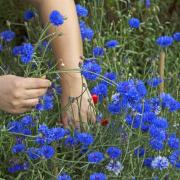As we head into the warmer months, our forests, gardens, parks and hedgerows are bursting into life with brightly coloured and sweet-smelling blooms. This is nature’s way of attracting pollinating insects and bees to fresh pollen and nectars. The official start of spring is usually said to take place at the beginning of March, followed by the spring equinox later in the month; the date on which day and night are of equal length. This is a trigger for rebirth and greenery as many species are prompted to leave their dormant winter state.
In March, the warmer temperatures cause tree sap to rise, taking sugars stored through winter from roots to branches and twigs, which will unlock the growth of buds, leaves or flowers. Fruiting trees rely on insects for pollination, so we see brighter and more fragrant blossom on show to signal to insects that nectar is on offer. By contrast, species that pollinate through the wind, will produce less dramatic clusters of green or brown flowers that hang or droop.
Longer, sunnier days also kickstart a process that turns carbohydrates in underground bulbs into sugar, causing the leaves and the flower to gently push their way out of the bulb, before breaking through the soil. During their wintery hibernation, many plants multiply naturally through the production of baby bulbs. This leads to the dramatic vistas that characterise the British landscape, including thick blankets of daffodils, tulips, crocuses, hyacinths, and snowdrops.
In Hampshire, we are lucky to have an abundance of places to enjoy the sights of spring. Head to Sir Harold Hillier Gardens near Romsey to see blossom-laden trees including a spectacular array of stunning pink magnolia varieties. The gardens are also home to a world-class selection of azaleas, camellias and rhododendrons.
In recent years, climate change is causing flowers to bloom a month earlier. This has important implications for seasonal changes that have previously been perfectly in sync. An ecological ‘mismatch’ may result in nectar and fruit no longer being available when it’s needed by pollinators and seed-dispersing animals. We can all take some simple steps to give biodiversity a helping hand this springtime. Daisies, violets, pansies and marigolds are all great options to plant and will grow in smaller spaces and pots.
About the author
Gemma Summerfield is a Countryside Projects Manager with Hampshire County Council’s Countryside Service. The service looks after many of Hampshire’s major country parks and National Nature Reserves, as well as some heritage monuments, local recreational spaces, and large areas of common land. It also manages Hampshire’s 3,000 miles of public rights of way.



























